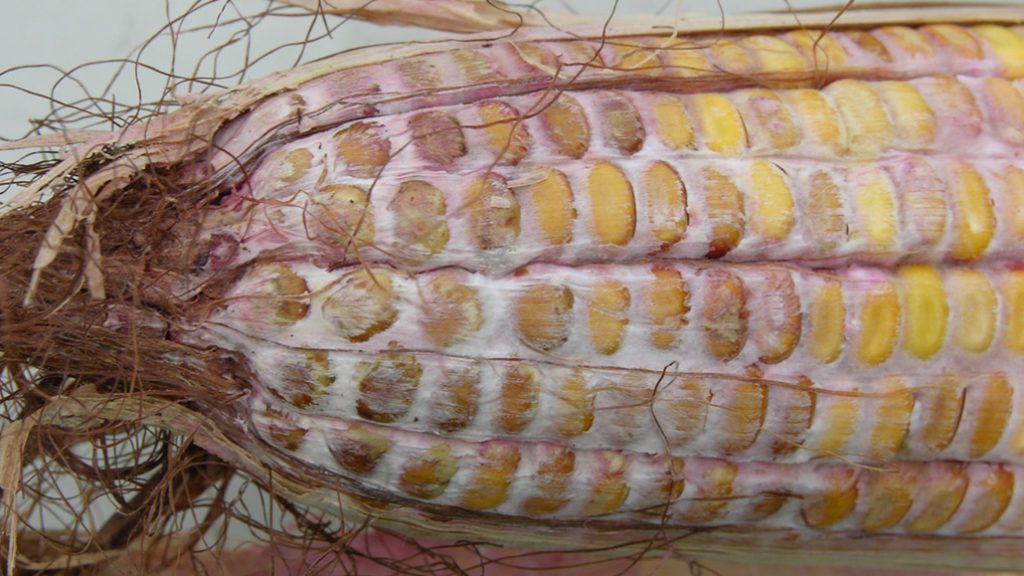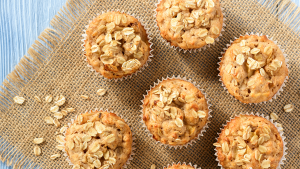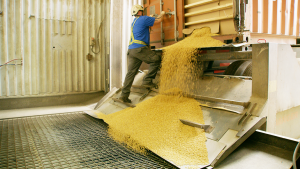DON in corn
WHAT TO LOOK FOR

WHAT IS DON (DEOXYNIVALENOL)?
A mycotoxin produced primarily by Gibberella ear rot that devalues grain corn when sold to buyers resulting in price reductions for grain sales.
If infected grain is consumed, humans and animals can be negatively affected.
CONDITIONS FOR GIBBERELLA EAR MOULD INFECTION
Warm (27°C – 28°C), humid, rainy days are ideal conditions for infection when silks are viable at pollination.
These conditions were commonly experienced between mid to late July in southern Ontario during the 2021 season.
IDENTIFYING GIBERELLA EAR ROT
Infection begins in the ear tip and moves down towards the ear base producing a dark red or pink coloured mould, sometimes it has a whitish appearance from the mycelium, but is usually referred to as pink mould. Toxins produced by Gibberella include DON, ZEN and T-2 toxin.
HOW TO PREVENT INFECTION?
- Use multiple hybrids with different silking dates to mitigate potential problems of a severe disease outbreak.
- Spray a recommended fungicide that suppresses ear mould at the label rate at silking, when silks are fully emerged and have not browned off (dryed up) is recommended.
- Combination of the use of less susceptible hybrids and the use of a labelled fungicide for ear rot control at the right rate and timing when weather conditions are prime for infection will help reduce severity of DON production.
WHAT TO DO IF YOU SEE GIBBERELLA EAR ROT IN YOUR FIELD?
- Call Agricorp to discuss your situation.
- Aim to harvest infected fields as soon as possible, do not mix old crop or low DON corn with potentially mouldy corn from this harvest.
- Try to get the cleanest sample out of combine by running the combine with concave setting open and cylinder speed set low. Set combine to provide high levels of wind to blow out lighter kernels, fines and cob pieces. Be sure adjustments don’t increase kernel damage, as downgrades from that can result.
- Dry grain quickly, using high temperature drying to 15 per cent or less. Once grain is dry the spread of infection is halted but does not lower the toxins already present. Cool grain quickly to less than 10°C or lower as it will slow growth of fungi.
- Take a sample to elevator to check grade, quality, and DON levels. If concerns arise, have the discussion before you deliver your grain.
- When delivering the grain to the elevator note what sampling and DON testing methods used.
NOTE: DON does not necessarily show up visually in a sample, if there is mould, there might be DON. If there is DON, there might not be visible ear moulds present. •
Visit www.cropprotectionnetwork.org for more information as well as refer to the 2021 Ontario Grain Corn Ear Mould and Deoxnivalenol (DON) Mycotoxin Survey that will be published in early October by the Ontario Ministry of Agriculture Food and Rural Affairs, with funding from Grain Farmers of Ontario. This survey will give a good indication of hot spots around the province so that you may take a proactive approach to corn harvest.

























